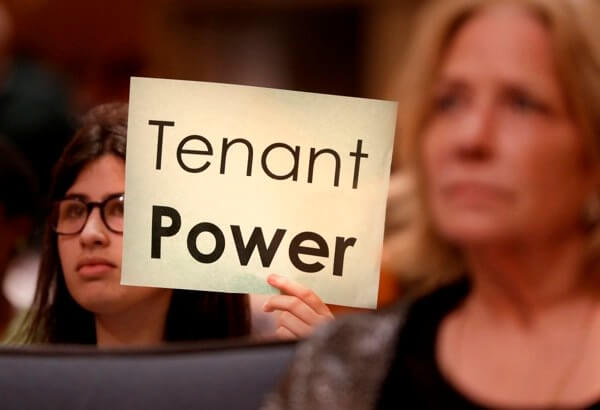By Gina Martinez
New York City’s 1 million rent-stabilized tenants will see their rent go up this coming year.
The Rent Guidelines Board voted 7-2 to increase one-year leases by 1.25 percent and two-year leases by 2 percent Tuesday night during a boisterous meeting at Manhattan’s Baruch College. The vote followed two years of rent freezes.
The decision does not come as a surprise to many since the board had made it clear they were in favor of an increase. In the first meeting in April, five of the board’s nine members voted in favor of a 1 to 3 percent increase for one-year renewal leases and a 2 to 4 percent increase for a two-year renewal lease.
Rent-stabilized apartments are in buildings containing at least six units that were built before February 1947 and comprise the lion’s share of rent-regulated homes in the city. Rent-controlled units, now less than 2 percent of the overall housing stock, have statutory tenants who occupied the apartment before July 1971 and often pay the same rent for years unless there is a major improvement to the building.
The board has said the price of operating rent-stabilized buildings went up by 6.2 percent in 2016 and will likely increase another 4.4 percent in 2017. Landlord members proposed that one-year leases go up by 4 percent and two-year leases rise by 6 percent, while tenant members proposed decreasing one-year leases by 4 percent and two-year leases by 2 percent.
In a statement, the chairwoman of the rent board, Kathleen Roberts, explained the RGB’s decision. She said that although the rise in owner costs arguably supported a larger increase, she believed that a larger increase was unwarranted in light of the historic trend of substantial increases in net operating income for landlords and because a larger increase raised affordability concerns.
“It is established that the board can consider tenants’ ability to pay rent as a factor in setting renewal lease adjustments,” she said. “Data from the 2014 Housing and Vacancy Survey, the most current data available, shows that the median gross rent-to-income ratio for tenants living in rent-stabilized apartments is 36.4 percent. This means that more than half of rent-stabilized tenants are paying 36.4 percent of their income in rent and are considered to be rent burdened.”
Roberts said additional data from the survey showed that 32.9 percent of rent-stabilized tenants are paying more than 50 percent of their income towards rent and that, generally, housing is considered affordable when a household pays no more than 30 percent of their income in rent.
“All these statistics point to a single fact: That rent stabilized housing remains unaffordable for a majority of tenants living in these units,” Roberts said.
Melissa Grace, spokeswoman for Mayor Bill de Blasio, said the city will never go back to the days when the landlord lobby got big rent hikes regardless of what the data said.
“Taken together, the past four years have seen the lowest guidelines in history – including the first two freezes ever – and a historic court ruling affirming the importance of tenant affordability in this equation,” Grace said in a statement. “We will continue to fight to keep this city affordable, and build on an important platform that helps to protect New York families, including funding free universal legal services for all low-income tenants facing harassment or eviction and advancing the most new and preserved affordable housing in a generation.”
The ruling affects nearly 2 million New Yorkers in rent-stabilized apartments and will take effect Oct. 1.
Reach Gina Martinez by e-mail at gmart

































